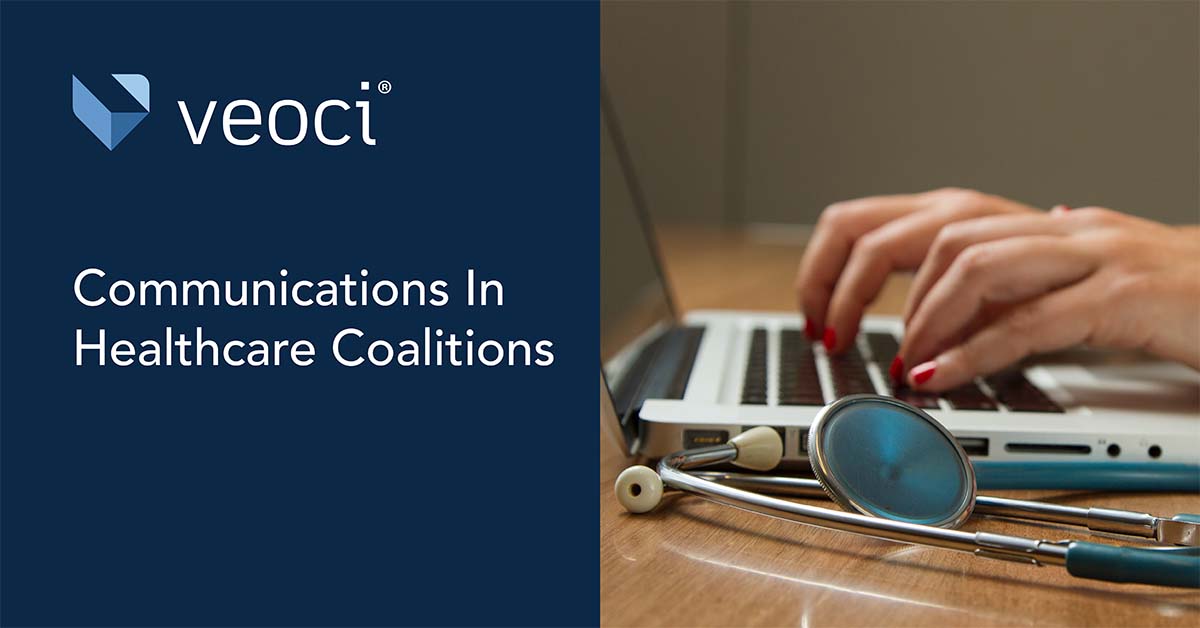Old sayings stick around for a reason. Even when an adage gets an eye roll or two, there’s still some value in its words.
In emergency management and disaster scenarios, there’s strength in numbers. Healthcare, as an industry, has recognized this fact. Hospitals and other healthcare facilities across the U.S. have started building coalitions within their respective regions. These structures allow facilities to lean on the healthcare organizations around them in trying times. Ultimately, the “healthcare coalition” idea makes a community more resilient and makes services a constant for the residents that rely on healthcare.
When we dive deeper into coalitions, we immediately find the operations that keep things moving smoothly. Communications and joint operations are cornerstone operations for coalitions, and the heads behind these support networks have to weave these operations into the fabric of their coalitions.
The Importance of Healthcare Coalitions
Coalitions are becoming the standard across healthcare. These networks bring together healthcare organizations across a region to collaborate on emergency preparedness. Healthcare coalitions include institutions like hospitals, emergency medical services, emergency management organizations, and public health agencies.
Coalitions help their partners prepare, respond, and recover from disasters and emergencies by building bridges between all camps. Hospitals and healthcare facilities, through coalitions, create a community of providers that help each other. Add in the resources coalitions make available to their partners, coalitions add to the preparedness of communities. Ultimately, colations create safety nets for healthcare providers, ensuring staff shortages, limited resource availability, and outages have limited impacts on communities.
Communication helps guarantee effective partnerships in coalitions, and the minds behind each coalition need to build the pathways for coalition leaders and partners to communicate, plan, and respond to emergencies in a joint manner.
If preparedness is the purpose of healthcare coalitions, the leadership teams of these networks need to simplify the joint operations and communications that go into the effort, especially for partner facilities and hospitals.
Communication is Key
There is a lot to consider when preparing for before, during and after emergencies. The key to making this work effectively is communications. This goes a long way and is at the heart of every operational facet of coalitions. Make communications a priority, especially if there’s only one thing your coalition can do. Platforms make this easy, creating a space for coalition leadership to coordinate with partners and opportunities for all network partners to work together, bolstering preparedness overall.
Communication is essential to all emergency operations, and this standard doesn’t change in healthcare. Coalitions need to implement communication systems for hospitals and other facilities to exchange information during both planning and response. But any system shouldering this facet of coalition operations has to work for the personnel participating in the preparedness efforts. Establishing streamlined communications removes the barrier to entry for all coalition partners participating in the network, and leads to better outcomes in planning and response. Easy-to-use communications helps ensure partner facilities get information out to the right people, share resources, and establish the joint operations that make coalitions a success.
Joint Operations, Preparedness, and Planning
Preparedness and planning for emergencies is complicated, and its difficulty only grows when more parties get involved. To ensure partners adequately plan and leverage each other during emergencies, coalitions should simplify collaboration and processes. Due to the immense time that goes into planning, the joint operations need to be seamless. Everything must move in a cohesive manner.
The Hospital Preparedness Program (HPP) provides leadership and funding for many hospitals, and it’s a critical piece of planning for and responding to disasters. And its benefits extend to coalitions. HPP funds extend to training and exercise support healthcare coalition members. With the help of this funding, coalitions can ensure all partners get the practice in and test processes.
Improving Coalition Operations
Healthcare coalitions are a benefit to not only their partners, but to the communities their partners serve also. Citizens rely on the healthcare system, and its leaders should take what steps they can to ensure its availability through both peacetime and disasters.
Coalitions have a big role in constant availability communities count on. Strong communications systems and joint operations are at the core of these networks, and the brains behind the partnerships should explore all the means that make these essential operations less hassle for coalition partners.








